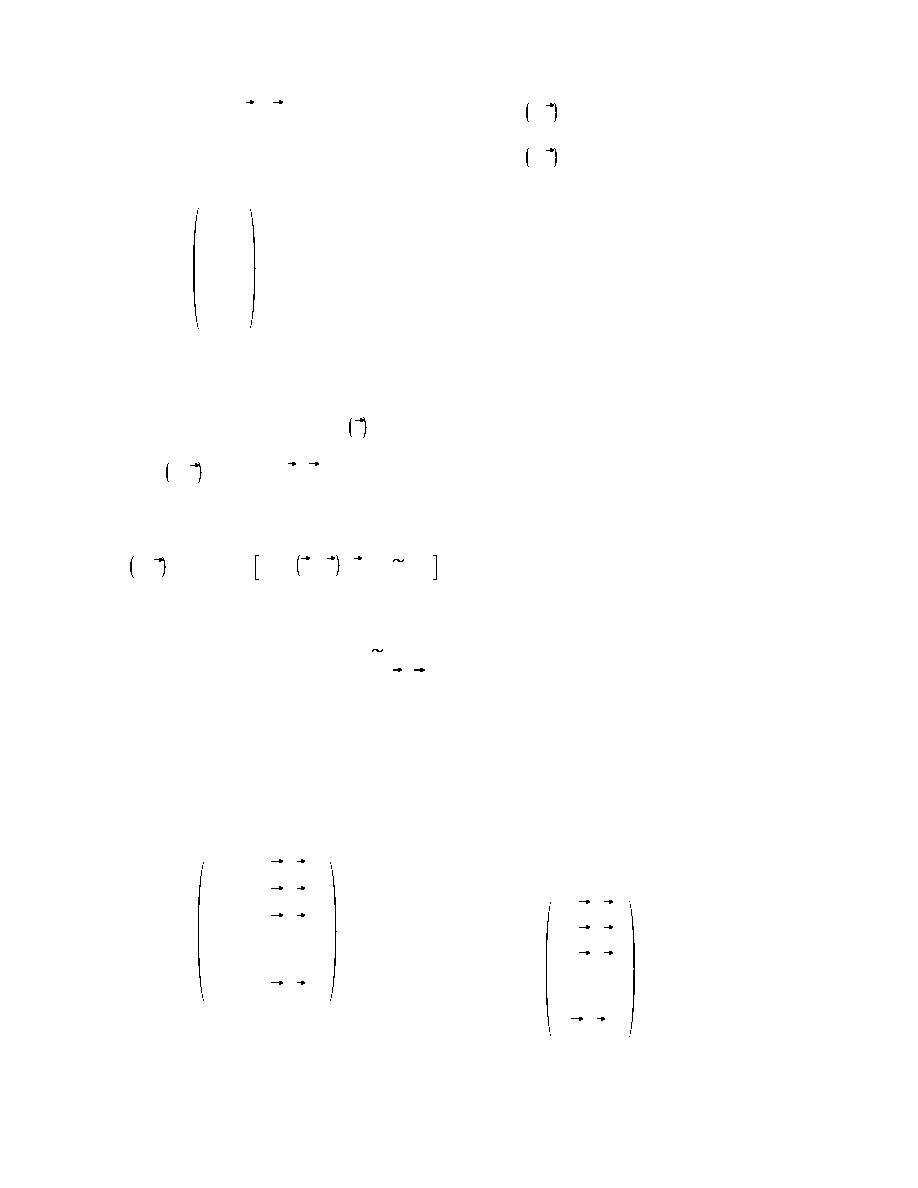
Xm(f) = S(f)e i ko R m + Nm(f),
P f, k = A*T XX*T A
(2)
(8)
or
where S(f) is the ideal Fourier transform of the
P f, k = A*T R(f)A ,
signal without the noise.
(9)
In matrix notation, the signal vector is
where R(f) is an M M matrix composed of the
product of the signal vector and its complex conju-
X 0(f)
gate transpose. The matrix R is commonly referred
X 1(f)
to as the spatial correlation matrix. A key result of
X 2(f)
this report will be to show that subtle changes in
.
(3)
X (f) =
the parameters used to estimate the correlation
matrix affect the bias in the beam power function.
Equation 9 is the foundation of the wavenum-
X M1(f)
ber estimation procedure used in this paper. Re-
ferring to eq 5, we see that the maximum of the
Given M spatial samples of the wave field, a
beam power function occurs when 0 = 0 .
k
k
beam response function [Y( f , k )] is formed by
When performing a narrowband FK estimation,
summing over each component of the signal vec-
eq 9 is evaluated at a single frequency over a reg-
tor and applying a phase shift that is dependent
ularly spaced grid of observation wave-numbers.
upon an observation wavenumber k :
A wideband beam power function can be pro-
duced by integrating eq 9 over a band of frequen-
M1
∑
ame ik
Rm
Y f, k =
Xm (f) .
(4)
cies:
m=0
f2
P k = ∫ A*TRAdf .
(10)
Using eq 2 and 4,
f1
Recently Nawab et al. (1985) formulated more
M1
∑
elegant methods of computing a broadband
am(f) S(f)e i
k0 k Rm
Y f, k =
+ Nm (f)
beamformer.
m=0
(5)
2.2. Bartlett and Capon maximum-likelihood
where the am(f) constants are spatial filter
beamformers
weights to be defined through the application of a
The BT and ML methods are special cases of eq
specific beamforming strategy, and Nm is the
9 and are a consequence of defining specific values
noise field modified by a phase shift of e ik Rm .
for the am(f) weighting functions (eq 5). The BT
Equation 5 is equivalent to an estimation of the
method is the conventional method of estimating
complex wavenumber spectrum of the sampled
an FK spectrum. The ML method attempts to
wavefield. In matrix notation the beam response is
minimize energy leakage into the beam response
from regions outside the observation wavenumber.
Y f , k = A*TX ,
(6)
This energy leakage problem is the spatial equiva-
where *T means complex conjugate transpose,
component of a spatial window function analo-
and
gous to time series windowing.
If all am(f) = 1 then eq 9 yields the standard BT
a0(f)e i k
R0
beamformer. Under this condition, eq 8 becomes
a1(f)e i k
R1
e i k
R0
a2(f)e i k R2
e i k
R1
A(f) =
(7)
e i k
R2
A′ =
.
(11)
aM1(f)e i k
RM1
A(f) is referred to as the steering vector. The beam
e i k
RM1
power at a given frequency and observation
wavenumber is
The power function is
4



 Previous Page
Previous Page
